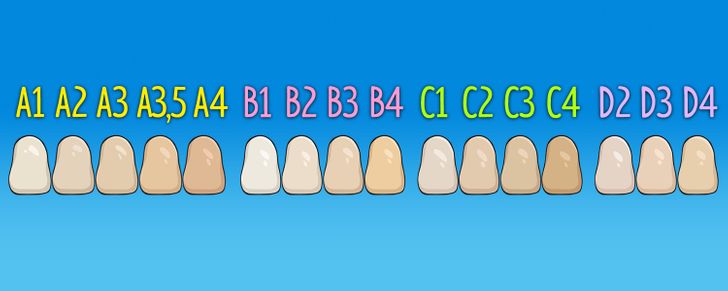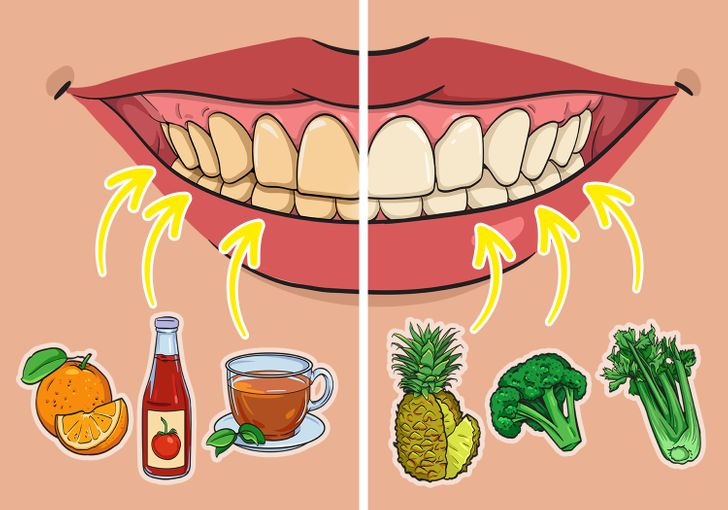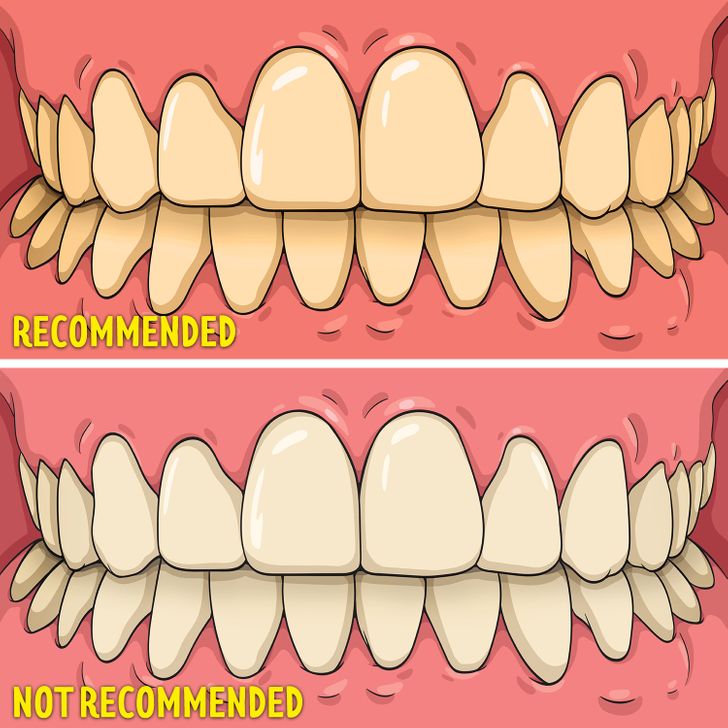The Colors of Tooth Enamel, and Whether or Not You Need to Whiten Your Teeth
Despite the fact that many people want to have perfectly white teeth, it’s necessary to understand that the natural color of tooth enamel can be very different from snow white. In this article, we want to figure out what color is considered normal, and whether it’s worth making your smile whiter.
5-Minute Crafts would like to remind you that this article is for information only, and for more details, you should turn to your dentist.
Why our teeth have a different natural color

A tooth consists of 3 basic parts, but the color depends only on 2 of them. Enamel is the outer layer. Since it’s translucent, the middle layer, dentin, can be seen through it. Good oral hygiene and the right choice of food and drinks will help slow down the natural wear of enamel.
Dentin color is very important because it determines the natural color of your teeth. Milk teeth appear white because they have a thin layer of light yellow dentin. But alas, permanent teeth have a thicker dentin layer with a deeper yellow tint.
If you want to whiten your teeth, your dentist will ask you to use a shade guide. It has 4 rows of colors called A—D and includes the following shades:
- Reddish-brown (A)
- Reddish-yellow (B)
- Gray ©
- Reddish-gray (D)
There are many ways to whiten teeth: daily brushing and polishing, over-the-counter gels that can be used at home, clinical laser whitening procedures, and veneers. You should always consult your dentist before starting any whitening procedure, including those done at home. Sometimes at-home procedures may result in unnecessary damage to tooth enamel, encourage decay, or make teeth appear translucent or pearlescent.
To determine how white your teeth should be, look at the whites of your eyes. The tooth enamel shouldn’t be whiter than that.
How to keep your teeth white with the help of your daily habits

Your daily habits and the foods you eat can significantly affect the health of your teeth. Apart from good oral hygiene, which includes regular teeth brushing, the use of dental floss, and so on, it’s important to limit your tea and coffee consumption. But these are not the only things you should do. A balanced diet and regular consumption of vegetables and fruits, such as broccoli, cauliflower, pineapple, onions, celery, and carrots will help keep your teeth healthy. Don’t forget about dairy products: they make your smile whiter.
But tomatoes, tomato sauce, citrus fruits, raspberries, blueberries, and blackberries can negatively affect the color of your enamel. Don’t cut these healthy foods completely out of your diet though, just remember to brush your teeth after eating them.
If it’s worth whitening your teeth

Most people have teeth that are of the A3 shade, and many dentists consider this to be the natural color of teeth. Experts recommend not trying to make your teeth perfectly white but choosing a shade that is slightly lighter than your natural color. Even making your smile 2-3 shades lighter can make a significant difference, while still maintaining a natural look.
Don’t forget that whitening your teeth comes with a number of contraindications. It can increase the sensitivity of your teeth and gums, so you shouldn’t do it if your teeth are sensitive. Additionally, if you have crowns, fillings, or potential oral health problems, this can enhance the risks associated with the whitening procedure. This is why it’s important to consult your dentist before starting any whitening program. Only a professional can find the right whitening method for you if you really need it.